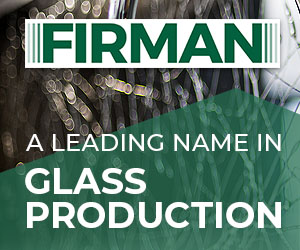From the desire to increase the sustainability of a building to the very real need to reduce its impact on the environment, it is important to view windows in terms of their thermal efficiency. Andrew Cooper, National Specification Manager from leading aluminium fenestration solutions supplier Senior Architectural Systems discusses some of the ways aluminium windows can provide both a compliant and creative solution to Part L of the Building Regulations.
SAS
When we talk about the thermal performance of fenestration, what we are really concerned about are U-values. Put simply, when it comes to U-value ratings, less is more and the lower the figure, the more heat is retained. The U-value of a window system is dependent on a number of factors including the frame material, the type of glazing and the use of a warm edge spacer bar which provides the space and insulation between the two or three panes of glass. Although BREEAM, PassiveHaus and other such standards have helped to encourage the wider specification of energy-efficient building materials and processes, the required U-values for both domestic and non-domestic dwellings are determined by Part L of the Building Regulations – and these figures are set to change.
Although the specific timings and targets of the new legislation are yet to be confirmed, one thing that is for certain is that the U-values target will be lowered. It is also very likely that further reductions will be introduced in the future so now is the time to factor achieving the best possible U-values into your specification plans.
Future-proof fenestration
The planned changes to Part L will shake up the construction industry – after all, its specific aim is to challenge us all to think more carefully about the impact that the built environment has on the wider world. However, for many fenestration system manufacturers, planning for such a change has been years in the making and rather than the new legislation being seen as a minimum target, it has helped fuel innovation to provide solutions that not only meet but exceed current requirements.
As all buildings lose heat from windows and doors, thermal performance is one of the most important characteristics of any system and most on the market use a strong polyamide as an insulator to prevent heat loss between the inner and outer frame. For our part, Senior wanted to push the boundaries even further with the creation of our patented PURe system that incorporates an even more effective thermal barrier made from expanded polyurethane foam; a material more commonly used in insulation products. This gives our PURe aluminium window the potential to achieve U-values as low as 0.71W/m2k, which far exceeds the current targets set out by Part L as well as the likely changes that lay ahead.
So, should window systems be specified on their U-value ratings alone? It’s a good place to start but most effective building envelopes are those that take a more holistic approach.
Adding value
As much as all buildings must meet the required U-value targets, they must also meet their specified budget. There is a misconception that ultra efficient window systems are the most expensive option but in reality, they are often competitively priced and what’s more, offer additional cost savings.
An obvious benefit of specifying low U-value windows and doors is that by retaining more heat, less energy is needed to heat the building. This can make a huge difference to the operational costs of a building and can provide a much greater return on investment than options with a more expensive outlay price such underfloor heating or solar roof panels.
Although the energy efficiency of fenestration systems can be boosted through the complementary use of low-emissivity – or low-e – glazing, it’s important to remember that the thermal performance of many aluminium systems, including our own PURe system, is really focused in the frame. Aluminium frames are much more hardwearing and less likely to break than glass, which in turn would be expensive to replace, so such systems represent a good long-term investment.
Add to this the fact that aluminium systems can be powder-coated in a variety of finishes to reduce maintenance and increase durability, there are many ways that that specifiers can make their budgets stretch even further.
Behind the figures
Low U-value windows and doors may help your scheme achieve Part L compliance but how can you be sure that the most thermally-efficient systems on the market are actually the most sustainable? This is where it is becoming increasingly important that manufacturers provide complete transparency on their manufacturing processes as any green credentials can be easily tarnished if significant waste and carbon has to be generated before the specified system even makes it to site.
By looking at the lifecycle of a product, from its manufacture and transportation to its operation and disposal, specifiers can get a much clearer picture of how sustainable a product really is and how its use will truly impact on the overall carbon footprint of a scheme. A good benchmark is checking if a manufacturer holds an accreditation such as BRE Global’s BES 6001 standard for the responsible and sustainable sourcing of aluminium extrusions.
Similarly, systems that offer ‘cradle to cradle’ recyclability can help further lessen the environmental impact of a project, reducing both its carbon footprint and the need for materials to be sent to landfill at the end of the building’s life.
Prepare for Part L
With the pending changes to Part L and the ever-increasing need to create more energy-efficient buildings, the specification of low U-value, cost-effective, fully recyclable thermally-broken windows is fortunately no longer such a tall order. With technical advice, product guidance and support with thermal calculations an essential part of a manufacturer’s service offering, engaging early with your chosen fenestration systems supplier can help unlock the full potential of your next project.











